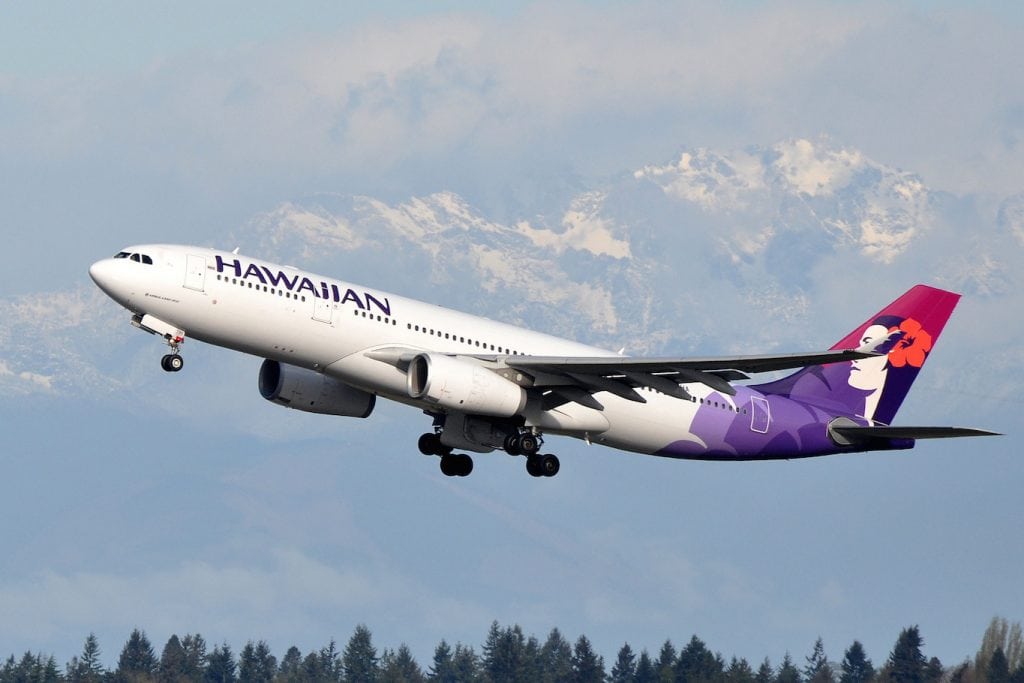Skift Take
For years, travel insiders have figured all brands, including airlines, would make big money in China. That is almost certain to happen someday. But it's not the case now, and with fuel prices rising, it makes sense that U.S. carriers are reevaluating their strategies.
About two years ago, lawyers from American Airlines and Delta Air Lines traded surprisingly nasty insults against each other in public filings, as each carrier wanted what was then a precious resource: The only remaining daily rights to fly between the United States and China’s three largest cities — Beijing, Shanghai, and Guangzhou.
American won, allowing it to start a new flight from Los Angeles to Beijing last year, even though Delta argued its proposed route between the same cities would offer a “superior experience for customers.” It was big news, as China is among the most world’s most protected aviation markets. Unlike most other countries, where airlines can launch whatever flights they want, both governments limit flights.
It seems like ancient history. What was once among the most promising long-haul markets for U.S. airlines has turned sour amid higher fuel prices and increased competition from Chinese airlines, which have driven down prices. American soon will cancel its flights from Chicago to Beijing and Shanghai, while Hawaiian Airlines will cease flying from Honolulu to Beijing in October.
Other U.S. airlines, including Delta, will have a chance to bid on the rights, but it’s not clear there will be takers. For all the talk about potential, U.S. airlines have had a tough time making China routes work, unless they fly from cities with high local demand, such as San Francisco, New York, and Los Angeles, or from hubs where they carry considerable connecting traffic, like Detroit and Dallas/Fort Worth.
American started flying from Chicago to Shanghai in 2006, and added Beijing in 2010, but neither route ever made money, American Airlines spokeswoman Leslie Scott said. After American stops flying to China and reduces Tokyo to three times a week in December, Scott said the airline expects Chicago to be the third most profitable of its eight hubs. Today, she said, it’s in the middle of the pack, around fifth.
Chicago’s not a bad location for Asia flying — United Airlines, with a larger operation there, makes it work by drawing connecting customers from the East Coast and Midwest, but for American, it’s not as robust as Dallas/Fort Worth. That hub, the world’s second largest, not only draws more connecting passengers, but also attracts connections from Latin America to Beijing and Shanghai.
Rather than hope Chicago-Asia profitability eventually will improve, as it has for years, American will refocus its international flying. Next spring, it will add Chicago to Athens as a seasonal route, hoping it will be as successful as another new leisure-focused route, Chicago to Barcelona.
“We’re the largest we’ve been in Chicago in the last 10 years, and that’s not going to change,” Scott said. “We just need to ensure that the flying we are doing is smart financially.”
Hawaiian Making Similar Moves
Over in Honolulu, Hawaiian Airlines bet it had a sure thing when it started flying to Beijing in 2014, citing a growing number of Chinese visitors, who the state said spent liberally. When the route started, aviation consultant Michael Boyd told the Honolulu Star-Advertiser, “China will pay off for Hawaiian like a slot machine.”
However, in an interview in June, Hawaiian Air CEO Peter Ingram told Skift the airline was having trouble with the Chinese market for three reasons. First, he said, Chinese travelers seemed to prefer closer leisure destinations in Japan and Southeast Asia over the the 10-hour redeye to Honolulu. Second, he said, Chinese travelers were having trouble securing visas to the United States. And third, relatively few people in Hawaii speak Mandarin, making it tough for travelers to communicate. (A major draw for Japanese visitors, he said, is that many hotels and businesses cater to them.)
“There’s a variety of things that will be solved over time that aren’t solved today, but I would be stunned if China wasn’t an important market in the future,” Ingram said. “It’s just a matter of getting to the point where it really starts to move the needle.”
In announcing its plans to suspend the route, Hawaiian said it intends to return at some point, and said it will keep its office there. Technically, airlines can’t squat on Chinese route rights, but it’s possible none of Hawaiian’s competitors will want them.
United Doing OK
United Airlines, the biggest U.S. carrier in China, has right-sized its China network and is performing reasonably well, United President Scott Kirby said this week at a briefing at the International Aviation Forecast Summit in Denver. But he added unit revenue has not returned to the levels it was two or three years ago.
“China has rebounded for us,” he said. “It has had several years of weakness as there was an awful lot of capacity growth of out Beijing and Shanghai. We are now to a more stable capacity environment in Beijing and Shanghai and demand remains strong. Both of those markets are doing well for us now.”
United is helped because it has been in China longer than American or Hawaiian and has better market awareness. But it, too, has had its stumbles. About four years ago, under previous management, the airline wagered on secondary cities, launching flights from San Francisco to Chengdu, Hangzhou, and Xi’an.
Among the three, only Chengdu remains.
The Daily Newsletter
Our daily coverage of the global travel industry. Written by editors and analysts from across Skift’s brands.
Have a confidential tip for Skift? Get in touch
Tags: airline innovation, american airlines, china, hawaiian airlines
Photo credit: Hawaiian Airlines will stop flying from Honolulu to Beijing in October. It will deploy the Airbus A330 it had been using on the route to more promising markets. Hawaiian Airlines
